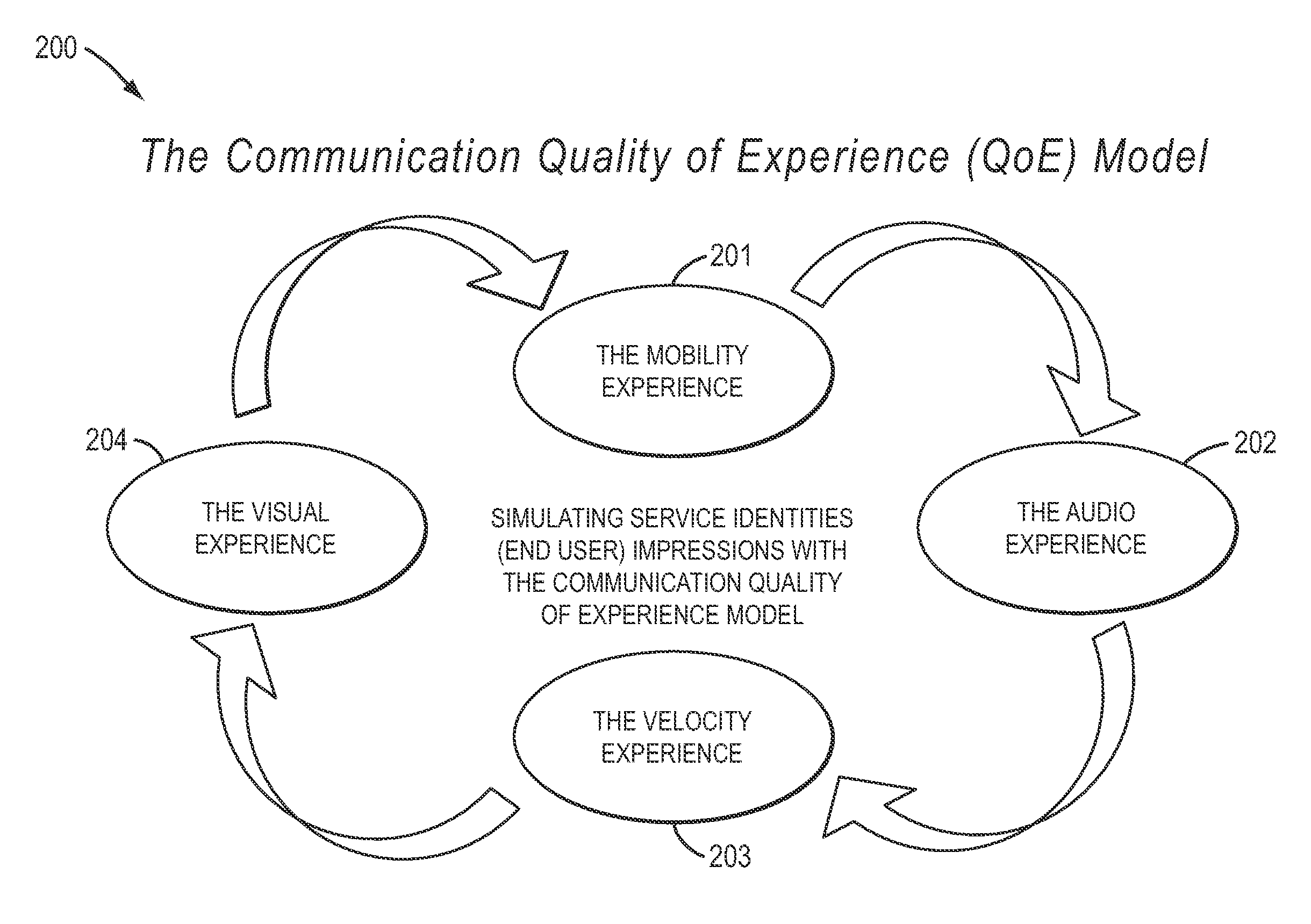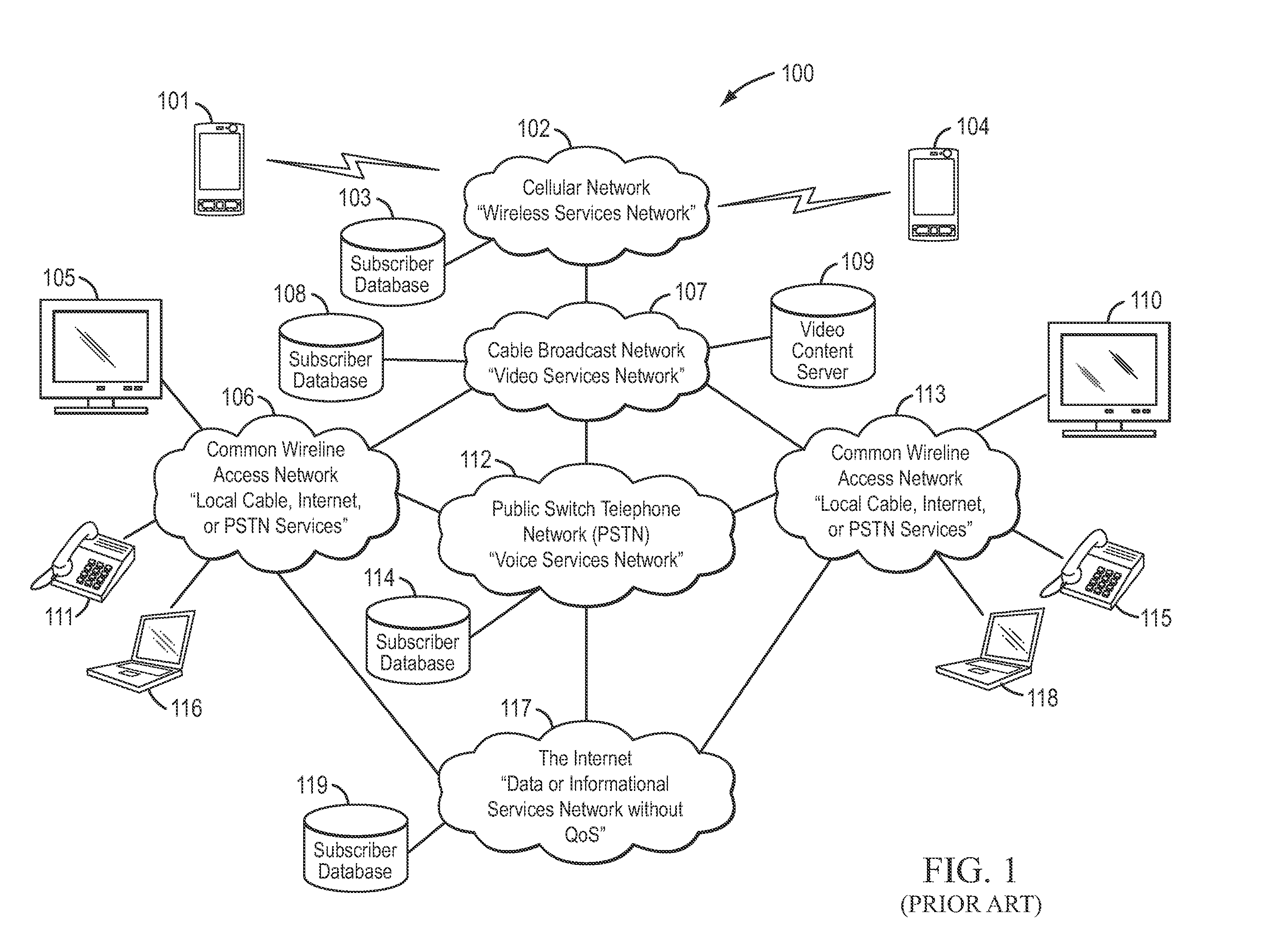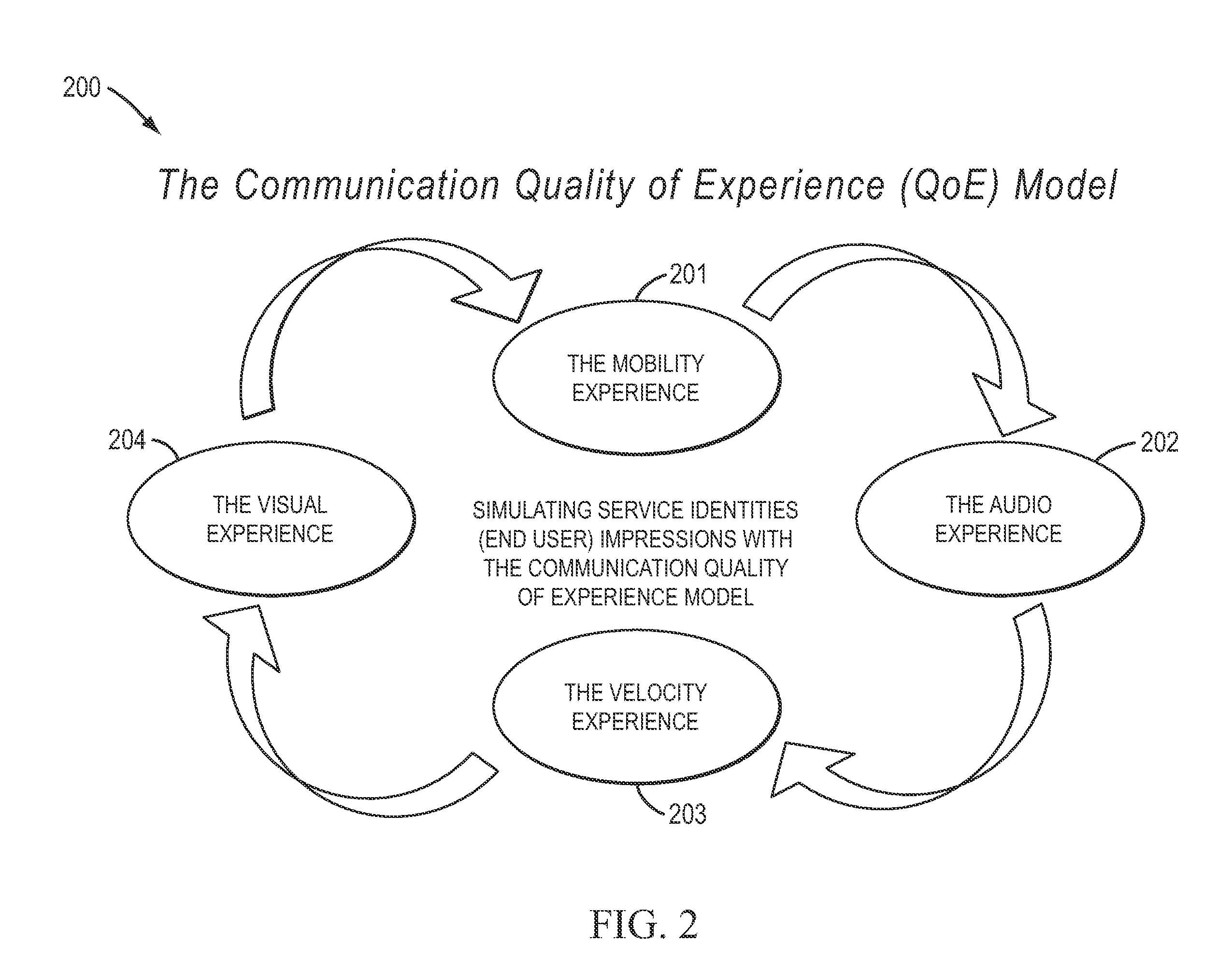[0018]A system and method for pricing network services based on a
service experience delivered to a
consumer via a device, according to various exemplary embodiments, can include storing, in a
database of a computer, data for prices for services delivered to a
consumer and information identifying the
consumer. The system and method can receive at the computer, via a network capable of conducting simultaneous communication sessions and a device,
input selection information indicative of at least one
type of service and at least one level of a
quality of experience of a service to be delivered to the consumer via the device. The system and method can also access a
quality of experience model configured based on at least one dimension that controls a
perception of a
sensation that the consumer experiences when the service is delivered to the consumer via the device. The system and method can further compute a price associated with the level of the
quality of experience of the service selected by the consumer by applying the quality of experience model using the
type of service and the level of the quality of experience of the service. The system and method can transmit the price over the network to the device for display to the consumer. If the consumer enters a response agreeing to the price, the system and method can transmit the type of service based on the level of the quality of experience to the consumer.
[0022]A method for seamlessly transitioning active services sessions across networks, according to various exemplary embodiments, can include establishing a communication session with a device to conduct a service session with a first type of network. The method can deliver services to the device connected to the first type of network during the service session. The services delivered to the device can be configured based on a Service Latency Quality Index (LQI) rating, which defines the Experience (QoE) a user operating the device will experience when receiving the services via the device. The method can receive a service transition request from the device connected to the first type of network to receive the services at a second type of network as the device travels from the first type of network to the second type of network. The first type of network and the second type of network can be configured having different performance capabilities. The method can perform service
interoperability between the first type of network and the second type of network by dynamically modifying the QoE via the LQI rating of the user to maintain the experience of the user as the device transitions from the first type of network to the second type of network having different performance capabilities. The method can determine a QoE Service Level (QSL) for the services being delivered to the device via the first type of network. The method can acquire a first set of parameters configured on the first type of network to deliver the QSL of the services to the device via the second type of network. The method can determine whether the second type of network is configured having the Service LQI Rating used to deliver the QSL of the services to the device via the first type of network so that the services can be seamlessly transitioned to the second type of network. If the second type of network is configured having the Service LQI Rating of the first type of network, the method can set a second set of parameters of the Service LQI Rating on the second type of network based on the first set of parameters and transfer the service session from the first type of network to the second type of network. If the second type of network is not configured having the Service LQI Rating of the first type of network, the method can adjust the first set of parameters of the Service LQI Rating of the first type of network to match an existing Service LQI Rating already provided by the second type of network and transfer the service session from the first type of network to the second type of network.
[0026]A system and method for advertising goods and services to consumers via a device connected to a communication network, according to various embodiments, can include receiving at, at least one processor, data for advertising goods and services to at least one consumer via a device connected to a communication network. The system and method can store, in a
database, data for advertising goods and services to the consumer via the device connected to the communication network, and store instructions to cause the processor to receive, via the communication network, registration information and
demographic profile information to receive at least one product or service via the communication network capable of conducting simultaneous communication sessions selected from a voice, a video, a data, or
multimedia transmission. The system and method can submit an
authorization request to the consumer to obtain
authorization to track and monitor, as a function of time, physical location and
demographic profile information, at least one device registered for use on the network by the consumer. The system and method can provide to the consumer a selection option to grant the
authorization during the submission of the registration information or to dynamically grant the authorization when the consumer initiates each communication session over the network. The system and method can also provide the consumer a tracking option to select a continuously tracking and monitoring feature or a selective tracking and monitoring feature. The continuously tracking and monitoring feature authorizes the network to continuously monitor and track the physical location of the device. The selective tracking and monitoring feature also enables the consumer to select when the network monitors and tracks the device based on an occurrence of a triggering event. If permission is granted by the consumer, the system and method can track and monitor as a function of time and the physical location of the device within the network. The system and method can detect when the device enters a predefined geographical area.
 Login to View More
Login to View More  Login to View More
Login to View More 


